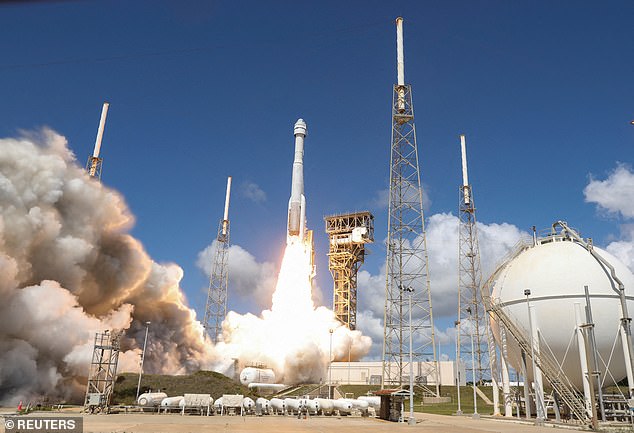Revealed: The shocking conditions endured by NASA astronauts stuck in space due to Boeing’s faulty spaceship
Camping in sleeping bags. Not washing for days. Life-changing health risks.
NASA’s stranded astronauts Sunita Williams and Barry Wilmore are “just having a rough time” on the International Space Station. They’re still stuck there and still don’t have an official return date.
Boeing’s broken Starliner has extended a mission that was supposed to last eight days into eight months of stress and uncertainty.
Reports indicate that conditions for astronauts are not optimal, including lack of proper sleeping facilities, increased psychological stress and increased health risks.
Despite all this, NASA officials insisted at a press conference on Wednesday that the astronauts had a blast.
NASA officials say astronauts Barry Wilmore (left) and Sunita Williams (right) are doing well while stranded on the International Space Station, despite reports of dire conditions.
“If I were in their shoes, I would be very happy with that,” said Kenneth Bowersox, deputy director of NASA’s Space Operations Mission Directorate.
“I would be happy with the extra time.”
Each additional day they spend there puts more stress on their bodies, as the microgravity and radiation in space affect their health.
Williams and Wilmore were originally scheduled to stay aboard the ISS for just eight days when they launched aboard Boeing’s Starliner in June. However, a problem with the spacecraft’s propulsion system means it is not safe to undock and bring them home.
NASA and Boeing are working on a plan to safely return the astronauts to Earth, but will not make a decision until later this month, officials said at Wednesday’s briefing.
Officials are currently weighing the risks of sending Williams and Wilmore home in the failed Starliner versus SpaceX’s Crew Dragon spacecraft, scheduled for launch in September.
If they choose SpaceX, the astronauts would remain on the ISS until February 2025, extending their mission by eight months.
An unexpectedly long stay in the cramped space of the ISS will test the astronauts’ patience, especially when it comes to sleeping accommodations.

Boeing’s disabled Starliner was launched to the ISS in June with Williams and Wilmore aboard. NASA and Boeing are still deciding whether the spacecraft is safe enough to bring them home.
The ISS has only six private bedrooms, but when Williams and Wilmore arrived, there were already seven astronauts on board, Time reported.
This means that three of them do not have proper sleeping accommodation.
Williams and one of the astronauts already on the space station sleep in less advanced sleeping quarters, called Crew Alternate Sleep Accommodations (CASA).
But Wilmore is forced to camp out in a sleeping bag in the Japanese space agency’s Kibo module.
“Butch is going to have to struggle a little bit,” Williams told Time editor Jeffrey Kluger, who spoke with the astronauts in May when they thought they might endure these conditions for only a week.
Williams also expressed her displeasure about the lack of showers on the ISS during an interview with the Society of Women Engineers on August 8.
“Of course we don’t have showers here,” she said. “Maybe I should have been a little more prepared for that.”
She added that on the ISS she is only allowed to wash her hair about twice a week.
Small annoyances like these can be tough on astronauts staying on the ISS for long periods of time and can even lead to psychological problems.
During simulated space missions, some experience the “third quarter phenomenon”: a dip in motivation occurs when astronauts realize that the time they have left in their situation is no longer than the time they have already spent.

Cramped conditions, lack of proper sleeping facilities and psychological stress can test the patience of stranded astronauts.
This can leave them feeling irritated, tense and unmotivated.
Despite all these challenges, NASA officials say Williams and Wilmore are having a great time up there so far.
They enjoy the scenery, “eat some of that delicious space food” and have a nice view out the window, Bowersox said during the briefing.
“I know they are making the best of it, but I’m sure they are just as eager as we all are to make a decision,” he added.
But even though the astronauts pretend to be brave, their bodies suffer under the harsh conditions of space flight.
Many studies have shown that prolonged space travel can lead to loss of bone density, muscle atrophy, exposure to intense radiation, vision problems, and other serious health problems.
Eight months is not the longest time an astronaut has ever spent on the ISS.
But with each passing day, Williams and Wilmore face a greater risk of cancer, osteoporosis and diseases that can arise from long-duration space flight.
At this point, NASA and Boeing are no closer to bringing the astronauts back, but they are working on finding the safest reentry strategy.
